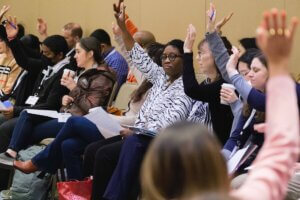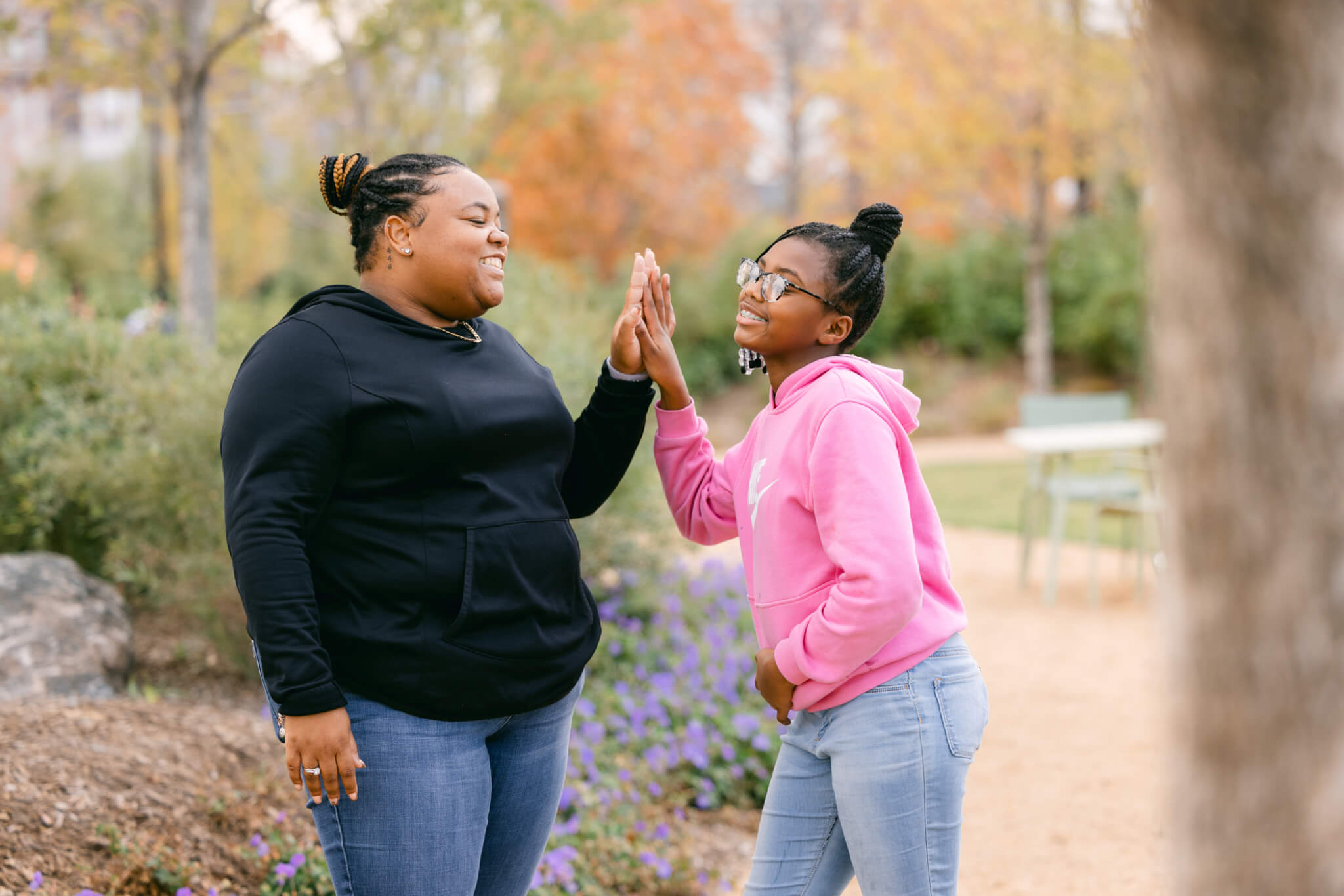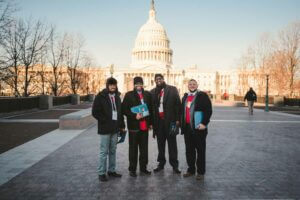The Mentoring Effect: One School District’s Success
May 2014

Photo credit: Be a Middle School Mentor, a program of United Way of Allegheny County
A mentoring relationship positively benefits the mentor and mentee as individuals. For example, The Mentoring Effect found that young people who were at-risk for not graduating but who had a mentor were 55 percent more likely to enroll in college than those who did not have a mentor.
But what’s the impact beyond the individuals? From the students to the teachers to the more than 400 community volunteers, the Pittsburgh Public Schools learned the mentoring effect impacts the school system and the community at-large.
Photo credit: Be a Middle School Mentor, a program of United Way of Allegheny County
A Program Rooted in Collaboration
The Be a Middle School Mentor (BAMSM) program started in 2009 as a collaboration between several community partners in Pittsburgh – the United Way of Allegheny County, the Youth Futures Commission, Pittsburgh Public Schools (PPS) and The Mentoring Partnership of Southwestern PA (TMP). Knowing that middle school is a time of great change and transition for students, they sought to match youth with adult mentors to help navigate the transition from elementary school to middle school.
Why mentoring? PPS superintendent Dr. Linda Lane puts it simply, “Because relationships are important and I’ve come to believe that they matter more than anything, not just for young people, but for adults as well.”
The strong sense of collaboration within the Pittsburgh community and, specifically, the work surrounding the BAMSM program, is key to its success.
Photo credit: Be a Middle School Mentor, a program of United Way of Allegheny County
“The BAMSM program is rooted in collaboration,” said Colleen Fedor, Executive Director of TMP. “After convening as a group to develop the program, the United Way spearheaded its implementation and continues to grow the program across the entire school district.”
The initial model was designed to match sixth grade students in the Pittsburgh Public Schools with mentors in a structured mentoring relationship that would meet once per week for the entire school year. Within the first two years, the program saw immediate growth and interest from students and adult volunteers alike. Because of its success, the program was expanded to include seventh and eighth grade students – making it the BAMSM program it is today.
Far-Reaching Impact
Dr. Lane values the impact mentoring has on her schools; more deeply connecting them to the communities they’re in: “We believe one of the most powerful things communities can do is reach out and wrap their arms around kids…and schools can’t do that alone.”
Students involved in the BAMSM program have made positive strides since its inception. 80 percent learned more about career possibilities and 75% are inspired to do well and see the value of school. One student said the program “is a great way to learn about lifestyles and careers you might want to do,” supporting the finding that 93% of youth involved in BAMSM would recommend it to their friends.
But for Dr. Lane, the benefits of mentoring extend far beyond the students. “For kids to do well in school, they have to be there and our staff appreciates our mentors’ work to reinforce the importance of attendance,” she says.
Daily attendance benefits individual students but it also keeps teachers’ curriculum and coursework on track, which benefits entire classrooms. Toni Kendrick, principal of Pittsburgh Allegheny 6-8 – a BAMSM site, knows first-hand the impact mentoring has on attendance and student engagement: “The biggest change we see because of mentoring is increased attendance based on the students knowing their mentors will be there,” Kendrick said. “Students who go to mentoring are also the ones who are more likely to be involved in extracurricular activities or to be on the honor roll.”
The program has also connected the school to community volunteers who may not otherwise be involved. Their individual participation adds up to success at a significant scale. Each year, the number of mentors increases and, this year, more than 400 adults volunteered their time as a BAMSM mentor. “It’s a great program and I find it fulfilling and worthwhile,” shared one mentor. “I hope it helps our kids be Promise Ready and to stay in school.”
Fostering Mentoring Success
So how can we learn from the success of the BAMSM program? It starts with the importance of advocating for mentoring in our schools. Dr. Lane feels that mentoring is a “high-ROI strategy” because it doesn’t take fancy equipment or special locations.
As far as implementing a successful mentoring program, she offers three-fold advice: “get buy-in from your schools and staff early on, engage a community partner or partners and evaluate so you can always improve.”




